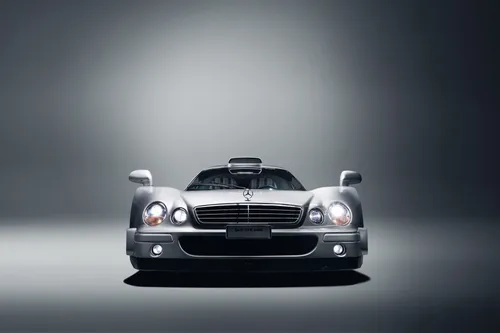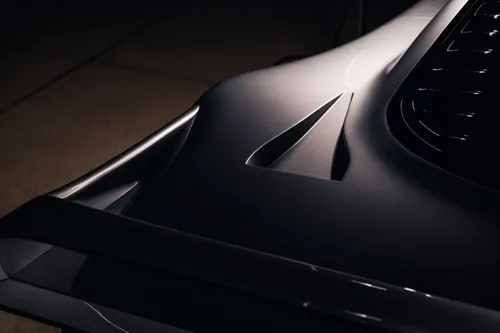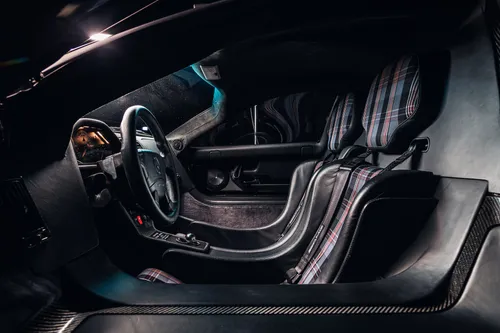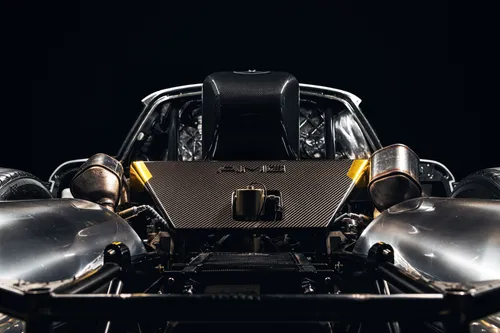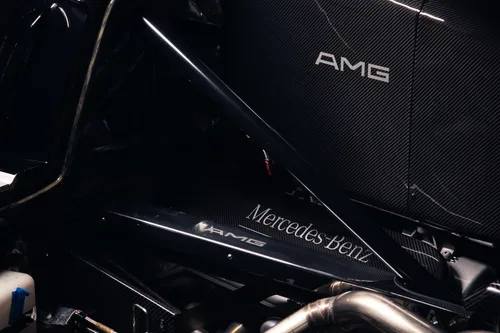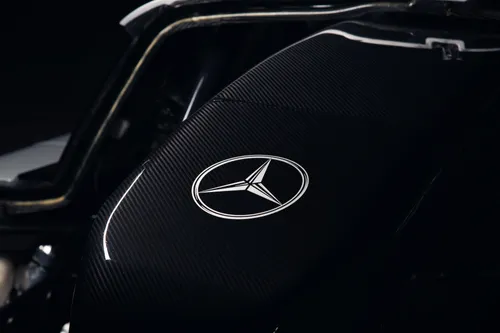Description
Mouse Motors is proud to present this stunning CLK GTR coupe, one of just 20 coupes produced.
This particular example was first delivered to its original owner in Switzerland before being sold to its current owner in 2017.
Prior to import in 2017, this CLK GTR was given to HWA/SPS for an in-depth service that included fuel bag replacement, etc. From there, it was then imported to the U.S. under the Show or Display exemption at the end of 2017 and entrusted to J.K. Technologies to perform the requisite import and federalization procedures, which were ultimately completed in October of 2017. Invoices and records for this process are included on file.
Included with the sale are the original owner’s manuals and service booklets (in German and English), SPS service documentation, manual folio, service blocks, and first aid kit.
As presented, the CLK GTR is the closest a road-going car will ever come to its race-ready sibling. Its performance figures are downright mind-blowing. Considering its status as one of the rarest German sports racing cars ever produced, it holds true to the valued traditions of homologated GT racing and has cemented its place in history as an instant classic among classics.
History of the CLK GTR
At the end of the 1996 season the International Touring Car Championship (ITC) imploded, leaving Mercedes-Benz and their competition partner AMG without a platform to showcase their sporting abilities. A new challenge was quickly found in the FIA GT Championship for production based sports cars split over two classes (GT1 and GT2). As an added bonus, cars built to the FIA GT regulations were also eligible to compete in the 24 Hours of Le Mans. Although intended for road car derived Grand Tourers, the regulations simply stated that homologation for GT1 required a minimum of 25 examples to be produced.
In 1996 Porsche were the first to exploit the loophole with their purpose-built 993 GT1 racer, which competed against Ferraris and McLarens that were actually derived from road cars. For incomprehensible reasons, the FIA helped the time-strapped Mercedes-Benz /AMG (as well as several smaller manufacturers) by changing the homologation date from ahead of the first race to the last day of the year. This left the boys from Stuttgart to focus exclusively on their upcoming GT1 racing car.
While the Porsche GT1 car was built around existing 911 (993 and later 996) road-car monocoque, Mercedes-Benz went ahead and started with a clean sheet. A cutting-edge carbon fibre monocoque chassis was drawn up, which was created by Lola Composites in the UK. Suspension was by double wishbones and pull-rod actuated coil-springs over dampers on both ends. Mounted amidships was an AMG modified version of Mercedes' six-litre V12 engine. Breathing through the mandatory intake-restrictors, it was still good for at least 600 bhp. The quad-cam V12 was mated to a six-speed sequential gearbox.
The rolling chassis was clothed in carbon-fibre body panels that vaguely reminded of the CLK road car the new CLK-GTR racer was supposedly based on. The only bits to find its way from the CLK onto the racing car were the grill and the dashboard. The head and taillights also bore a resemblance with the recently introduced two-door coupe. During the development of the advanced aerodynamics, Mercedes' engineers actually used a McLaren with new bits grafted on them during testing. From the start of the design work, it took just 128 days to complete the first two cars. This enabled Mercedes to take part in the opening round of the FIA GT Championship, which was held up the road at the Hockenheimring.
As was mandated by the FIA, AMG did build a single CLK-GTR road car before the end of the year. Setting it apart from the racing car was an integral rear wing and a seven-litre version of the V12 engine, which was rated at 612 bhp. Mercedes-Benz retained the first road car and it would take another year before the deliveries of the promised production cars would start. The batch of 20 customer cars was eventually built between the winter of 1998 and the summer of 1999. Priced at roughly $1.5 million, the CLK-GTR earned the distinction of being the most expensive road car ever built at the time. In the following years existing cars were modified by AMG/HWA with larger engines and at least five additional cars were built with Roadster bodies.
When AMG Mercedes returned to the FIA GT Championship in 1998 they found only Porsche had come back. Arch-rival BMW had retired their McLaren in favour of a new open-top prototype in a quest for outright glory at Le Mans. Taking a page out of the Mercedes-Benz instruction manual for interpreting the regulations, Porsche had prepared a brand new version of their GT1 car, complete with a carbon-fibre tub. The restrictor imbalance left the Porsches harmless again in the FIA GT; the first two rounds were won by the CLK-GTR. These would be the final outings for the Works cars, although Persson Motorsport continued to run their cars for the remainder of the season.
- Read more at Ultimate Car Page


